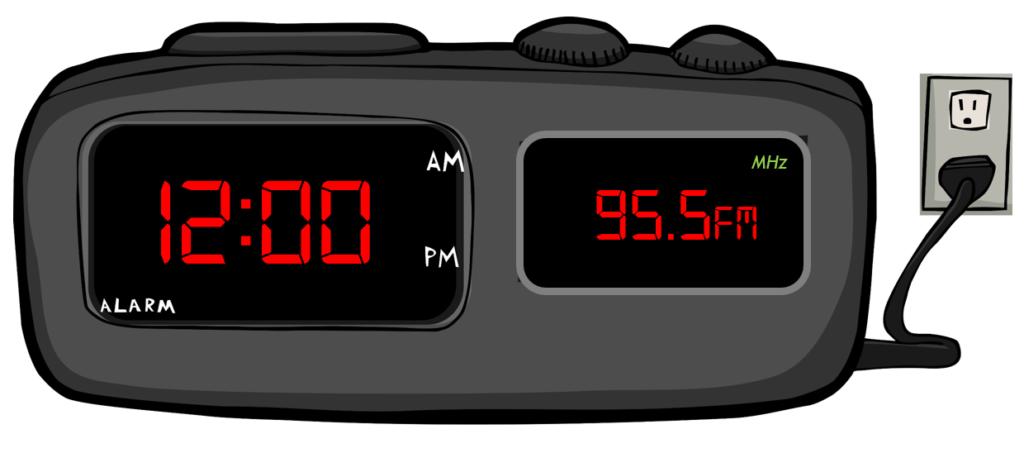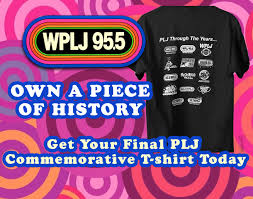
Today’s blog post was originally published five years ago – but in some ways it seems like a lot longer ago than that.
Back in 2019, WPLJ went off the air, sold to EMF where it is now in the K-LOVE family of Christian music stations. Chances are, one of their stations is in your market.
This post is an apropos one for a #ThrowbackThursday because it is all about the art and discipline needed to build a strong radio brand in the Digital Era. Yes, it’s a eulogy for PLJ, but it also raises questions about what it requires to build a lasting brand in this environment. Four and a half months into 2024, and the broadcast radio industry continues to grapple with these familiar problems – but now there’s less budget and a thinner financial cushion than we were working with in 2019.
Changing, flexibility, vision, resilience, innovation – they are all words we bandy about in our meetings. At conferences, they’re tossed around like softballs. But in the real world of walking the walk, they are proving more difficult to live up to with each passing year.
We all aspire to build radio brands for the long haul. We like to think we’re playing a long game. But the stations AFDI are fewer and farther between. Not every actor wins an Oscar. Not every team wins a Stanley Cup. Only the best of the best reach “icon” status. And maybe that’s the way it should be. – FJ
May 2019
Today marks the final day for a radio brand that many now describe as iconic – WPLJ, New York.
Just typing the legal ID gives me chills, because like hundreds and hundreds of radio broadcasters, PLJ played a role in my career. I wrote about the station in this blog a couple weeks ago in a post called “The Case For ‘Retiring’ Radio Station Call Letters.” Not surprisingly, many radio veterans responded positively to the idea of preserving the industry’s history, in much the same way sports teams “retire” the numbers and jerseys worn by its biggest stars – its Hall of Famers.
And credit where credit’s due. WPLJ had some incredible people walk through its doors – both the air studio and the corner office – over the past five decades. Many of them will be part of the “honor guard” that will celebrate this radio station’s sign-off. As it should be.
When PLJ rocked New York throughout the ’70s, it had it going. Headquartered in the ABC building on 1330 Avenue of the Americas, the late Larry Berger was at the helm, Nick Trigony was the GM, and its airwaves were graced with Jim Kerr and Shelli Sonstein, Carol Miller, Pat St. John, Tony Pigg, Jimmy Fink, Zacherle, and Bill Ayres. The station had the full backing of ABC, run first by Allen Shaw and later, Marty Greenberg. In its day, PLJ was one special radio station.
But did WPLJ fall into the elite group of radio stations – KHJ, KDKA, CKLW, KMET, and WLUP?
According to advertising and marketing guru, Shelly Palmer, including PLJ in this club may be misguided. In a post he wrote called “What is a Radio Brand?,” Palmer questions PLJ’s worthiness. In recent years, it’s hard to argue with his logic.
While many radio stations – even the biggest and best – have changed hands more than a few times, some survive these transitions better than others. Without question, you might make the case that PLJ was victimized by the instability of ownership change, and perhaps their inability to remember the station’s brand essence.
Then again, you might make the case that PLJ changed directions so many times, part of the station’s brand was change. This :60 “tribute” to the station by NorthJersey.com speaks volumes about (in)consistency and brand flip-flops.
That’s a lot of logos, looks, and styles in under fifty years.
And that’s part of the point Palmer makes. Noting that PLJ became addicted to in-the-moment tactics rather than strategic brand building, he points out that “From sign-on to sign-off, promoting tune-in was the central focus of all of PLJ’s on-air and cross-channel advertising. Contests, requests, value-added promotions…if you can think it up, PLJ has tried it over the years. ”
First, chasing diaries, and then going after meters, Palmer contends that millions of dollars were spent marketing “occasions” rather than the brand and what it meant to New Yorkers. PLJ lived in a “radio vs. radio world” – playing the game against stations like Z100 – rather than seeing the bigger picture as the competitive landscape was being redefined by the Internet. “Radio vs. everybody” is the world in which every broadcast radio station lives, but few look beyond this month’s ratings and rankers, comparing their fortunes to other stations in town:
We have a .4 but the other guy has a .5.
There’s a 35-44 male meter in one of our metro counties giving 300 quarter-hours a week to our nemesis.
We had a jock onstage at the local music festival and they didn’t.
We adjusted our stopsets to better counter our main competitor so we both play commercials at the same time.
That’s the world in which the radio broadcasting industry has trained its programmers and promotion directors to compete. But where’s the strategic marketing and the long term brand-building? How can radio stations not just fight the fight in the hometown battles for ratings and revenue, while also seeing the bigger picture of a more complex competitive matrix?
We talked about the necessity of shifting to a brand-focused future more than four years ago in a post called “Who’s Your Digital Daddy?”
At that time, we suggested that a radio station that’s a collection of songs and contests doesn’t have the staying power in the whatever/wherever digital environment of today where commercial-free playlist services are abundant. To that end, Palmer believes that as EMF flips the station to its networked K-LOVE format, there’s not much of a PLJ brand left anyway.
And he poses the existential question:
“What business was PLJ in?”

I would strongly encourage you to read his post, and ask yourself the same question about your station. Palmer believes that part of PLJ’s downfall was becoming so tied to its delivery system – a tower and transmitter – that it lost sight of its ability to build a robust, multi-platform entertainment brand.
When Jacobs Media delivers its Techsurveys each year and implores you to create content and provide value on a multitude of media channels, it’s precisely because of what Palmer is talking about.
And it’s why so many stations that meet PLJ’s fate end up launching a streaming and/or HD2 channel only to watch it fail to gain traction, and ultimately fade into oblivion.
The question shouldn’t be, “But how can we monetize these digital channels?”
Instead, it should be “How can we strategically use these distribution channels to build a multi-media brand that consumers can connect with, participate in, and embrace?”
That’s clearly a gnarlier and more complicated issue, more of a Rubik’s cube than a game of radio Tic-Tac-Toe.
For too long, radio broadcasters have been taking the easy way out, propping up stations with contests rather than content.
You can see where that got PLJ. Rather than hoping your station doesn’t end up out of business and forgotten, Palmer’s blog is a cautionary tale that should stimulate a whole new conversation  at your next strategic/research meeting.
at your next strategic/research meeting.
At the end of the day – literally – Palmer suggests “the best (PLJ) can hope for as it rides off into the sunset is to sell a few commemorative T-shirts.”
Our condolences on this sad New York radio day to the hard working men and women that have spent parts of their careers at WPLJ, as well as the millions and millions who listened to the station over the years.
But a lasting brand? Hardly.
What business is your station in?
Thanks to Steve Goldstein for sending me Shelly’s blog post. – FJ
- The New Pope Was Selected Faster Than Most Radio Organizations Hire New CEOs - May 12, 2025
- What If Radio Tried Something Right Out Of Left Field? - May 9, 2025
- Why Radio PDs Are A Lot Like NBA Coaches - May 8, 2025





Well written, Fred. A radio “brand” these days is much more difficult to create than ever before. Radio (AM/FM) still has the opportunity over its digital competitors as it’s still easier to consume and (at least for now) showing up on the dashboard. But, as some will point out, the value of a broadcast property is probably more associated with its real estate than it’s license, and radio investors are looking to wring out as much cash as they can before leaving the skeleton in the sand. Kudos to the everlasting efforts of WPLJ’s staff from top to bottom, but 5 years later we see that the remnants of 95.5 are long since forgotten. Shame.
The last 5 years have just flown by. But you’re right about the “Dust in the Wind” reality. And yes, a lot to be loved by the way PLJ alums handled this transition.
Fred, I wished I knew you were doing this story, I would have sent you a link to my WPLJ Farewell Party recorded at The Cutting Room in Manhattan in mid-May 2019 exactly five years ago! It would have given a lot of people a darn good idea of what WPLJ was really all about. The two speeches at the end of the evening by Jim Kerr and Scott Shannon were truly riveting! Oh well. All this stuff will hopefully be uncovered after I die, which hopefully is still a few years away.